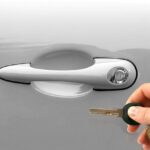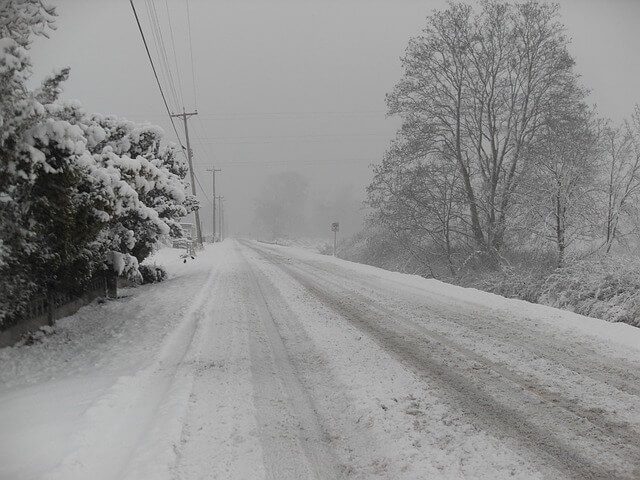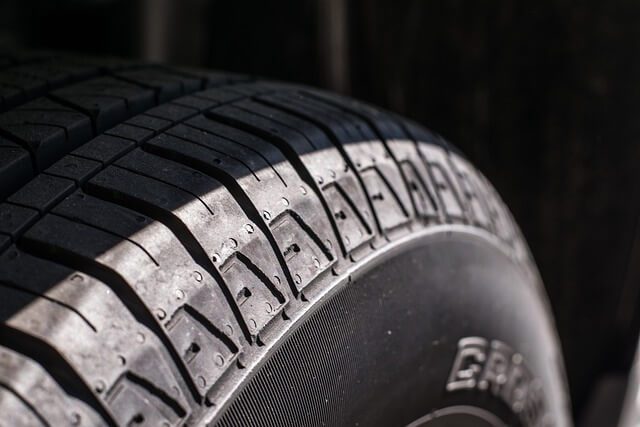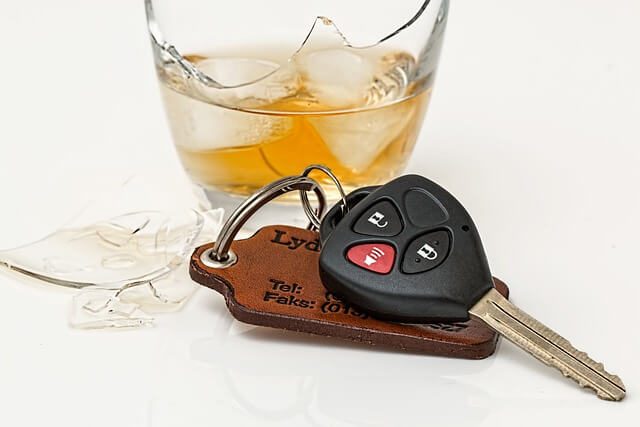
Drink Driving in the UK: A Sobering Reality
21 December 2023
Pros and cons of leasing a car
13 February 2024A Complete Guide to Safe Winter Driving: Tips and Tricks
Picture this scene: delicate snowflakes gracefully descending from the heavens, transforming the earth into a glistening winter wonderland. The winter landscape is truly breathtaking, yet it conceals a daunting obstacle for those behind the wheel. Driving during the winter season can be quite challenging, given the presence of icy roads, limited visibility, and unpredictable weather conditions.
In situations like these, it is crucial to be well-prepared. That's why we've put together a comprehensive guide to winter driving safety - a valuable resource filled with helpful tips and techniques to ensure you can confidently navigate the icy roads.
Here, we'll give you professional tips on topics ranging from navigating snowy roads to keeping your car in top shape during the winter months. We will discuss important subjects such as vehicle preparation, navigating difficult road conditions, and ensuring safety during winter weather.
So whether you have years of experience driving in winter conditions or you're a beginner facing the snow for the first time, come with us as we explore the realm of safe winter driving. Let's work together to make sure the winter season is full of warm memories and stress-free travels. Get ready for our expert advice on mastering winter driving like a professional.
In this article
ShowHide- A Complete Guide to Safe Winter Driving: Tips and Tricks
- Top Hints and Tips to Keep you Mobile
- Winter Driving Tips: Allow for Ample Space
- Surviving Winter Weather Driving: Essential Equipment
- Snow Driving in the UK
- Tackling Strong Winds While Winter Driving
- Tips for Improving Winter Driving Skills
- Conclusion
- FAQs About Winter Driving: Be Prepared for a Safe Journey
- Q: Is it possible to use snow chains as a substitute for winter tyres?
- Q: What makes winter driving so difficult?
- Q: What steps should I take to get my car ready for winter driving?
- Q: Are winter tyres necessary if I already have all-season tyres?
- Q: Why is it crucial to inspect my brakes before driving in winter?
- Q: What adjustments should I make to my driving in snowy or icy conditions?
- Q: What are the necessary items to include in a winter emergency kit?
- Q: Is it necessary to warm up my car before driving in cold weather?
- Q: What are some effective ways to keep my windscreen from fogging up?
- Q: Should I maintain a full tank of petrol during the winter months?
- Q: What are some tips for safely navigating icy hills?
- Q: Is it safe to use cruise control in winter conditions?
- Q: Why is it crucial to verify weather and road conditions prior to embarking on a winter journey?
Top Hints and Tips to Keep you Mobile
Preparation is crucial when it comes to winter driving. By following the proper procedures to get your car ready for winter weather, you can guarantee a safer and more comfortable driving experience. Here are some useful suggestions and advice to help you stay mobile throughout the winter months:-
1. Winter Tyres
Winter tyres are a great investment for enhancing your car's grip on snowy and icy roads. These specialised tyres feature a unique tread design that enhances traction and manoeuvrability in chilly weather conditions. Regularly checking the tread depth and inflation pressure is essential for maintaining optimal performance.
2. Windscreen wipers
Make sure your windscreen wipers are in proper working order and replace them if needed. Clear visibility is essential for safe winter driving, and it's important to have reliable wipers that can effectively remove snow, ice, and rain.
3. Lights
Make sure to inspect all of your lights to ensure they are functioning correctly. This includes your headlights, taillights, brake lights, and indicators. During the winter season, the days become shorter and visibility can be compromised. It is crucial to make sure that your lights are in proper working condition. This is not only important for your own safety, but also for the visibility of your vehicle to other drivers on the road.
4. Vehicle breakdown Cover
It's a good idea to get breakdown cover to ensure peace of mind throughout the winter months. If your vehicle experiences a breakdown or encounters any other issues, having dependable breakdown assistance can prevent inconvenience and swiftly get you back on the road.
By adhering to these straightforward suggestions, you can prepare your car for winter driving and enhance your safety on the road. It is important to exercise caution and adapt your driving style to the current road conditions. Keep an eye out for additional winter driving tips in the upcoming sections.
Winter Driving Tips: Allow for Ample Space
Driving during the winter season can pose significant challenges and risks, particularly when encountering icy or snowy roads. It is essential to ensure you have sufficient space on the road to stay safe during winter. It is important to keep a safe following distance and adjust your speed accordingly to ensure safety. By adhering to these guidelines, you can greatly minimise the chances of accidents and guarantee a safer journey.
Ensure a Safe Following Distance
When driving in winter conditions, it is crucial to maintain a safe distance between your vehicle and the one in front. Having more time to react and manoeuvre can be crucial in situations like sudden stops or skidding. It is advised to maintain a following distance of at least three to four seconds. To figure this out, choose a fixed object on the road such as a lamppost or a sign. Once the vehicle in front has passed that object, begin counting. If you manage to reach it within three to four seconds, you are maintaining a safe distance.
Adjust Your Speed
It is extremely important to drive at appropriate speeds when faced with winter conditions. It's crucial to take a more relaxed approach and allocate additional time to reach your destination. Speed limits are set for ideal conditions, so it's crucial to keep in mind that they need to be adapted in unfavourable weather. It is important to drive at a reduced speed in order to maintain better control of your vehicle and have more time to react. Just a friendly reminder: it's always preferable to be fashionably late than to not show up at all.
Exercise caution when sharing the road with other drivers
Although you may be diligently adhering to safe driving practices during winter, it's important to remember that not all drivers on the road may be doing the same. Remain vigilant and ready for unexpected manoeuvres or unpredictable driving behaviour from other individuals. Maintaining a safe distance is crucial as it gives you more time to react and also accounts for the behaviour of other drivers. Exercising caution and taking proactive measures can help you steer clear of potential accidents.
Key Takeaway
During the winter season, it is crucial to exercise additional caution while driving. Ensuring that you maintain an adequate distance from other vehicles on the road is imperative to guarantee a safe and secure journey. It is crucial to always keep a safe following distance, adapt your speed according to the conditions, and stay alert for other drivers.
With these helpful suggestions, you'll be able to navigate winter roads with greater confidence and minimise the chances of accidents. You'll be best equipped to take care and have a responsible winter driving season.

Surviving Winter Weather Driving: Essential Equipment
When it comes to winter driving, it is absolutely essential to be well-prepared for any potential emergencies that may arise. Having the necessary items in your car is crucial for ensuring your safety and the safety of others on the road. Presented below is a compilation of necessary gear to have in your vehicle for safe driving in winter:-
1. Ice Scraper
Having an ice scraper is essential for effectively removing ice and frost from your car's windows. It's important to have a reliable scraper with a durable handle in your vehicle.
2. Blanket or extra warm clothing
If you happen to experience a breakdown or find yourself stranded in chilly weather, it's essential to have a blanket or additional cosy clothing to keep you warm and comfortable.
3. Water and Snacks
It's always a good idea to have a bottle of water and some non-perishable snacks in your car. These can be quite useful in unforeseen circumstances and long periods of waiting.
4. First Aid Kit
It is crucial to have a well-stocked first aid kit for any emergency situation. Ensure that your kit is stocked with essential items like bandages, antiseptic solution, pain relievers, and any required medications.
5. Torch and extra batteries
A torch is extremely useful when you have to examine your vehicle or navigate in the darkness. Don't forget to keep some extra batteries on hand for your torch.
6. Portable Battery Charger
Car batteries have a tendency to lose their charge more quickly in colder temperatures. It's always a good idea to have a portable battery charger on hand in case you need to jump-start your vehicle.
7. Roadside Warning Triangles
If your vehicle breaks down, roadside warning triangles can help notify other drivers of its presence. Make sure to position them at a safe distance behind your vehicle to ensure optimal visibility.
8. Spare Tyre and Tools
It is important to always keep a fully inflated spare tyre in your car, along with all the tools needed to change it, such as a jack and lug wrench.
Keep in mind that these items are crucial no matter how long your journey is. It's wise to be ready and keep them readily available in case of an unexpected situation. Stay safe on the road during winter conditions by ensuring you have the right survival equipment in your car.
Snow Driving in the UK
Driving in snowy conditions can present challenges and demands extra caution to maintain safety on the road. Whether you're new to driving in the snow or have some prior experience, it's crucial to become acquainted with essential tips and techniques for safely manoeuvring through snowy conditions. Here are some helpful tips to ensure your safety while driving in the UK during winter:-
Tips for New Snow Drivers
For those who are new to driving in snow, it's completely normal to experience some apprehension. Nevertheless, by adopting the appropriate strategy and making adequate preparations, you can effectively manoeuvre through snowy conditions. Consider these helpful suggestions:-
1. Prepare for your journey: Prior to embarking on your trip, it is advisable to consult the weather forecast and assess the current road conditions. If you can, opt for main roads and highways that are more prone to being gritted and cleared.
2. Reduce speed: It is important to lower your speed in snowy conditions in order to maintain control and be prepared for any unforeseen circumstances. It is advisable to reduce your speed and increase the distance between your vehicle and others on the road to ensure safer stopping.
3. Smooth and gentle manoeuvres: Ensure smooth and gentle manoeuvres: Adjust your steering, braking, or acceleration in a gradual manner to prevent sudden skids or spin-outs.
4. Ensure a safe following distance: Extend your following distance to provide ample time for braking. This feature can be quite useful in avoiding accidents when the car ahead unexpectedly decelerates or comes to a halt.
Dealing with Black Ice
Watch out for black ice on the road - it's a treacherous hazard that greatly diminishes traction. Allow me to provide you with the essential information:
1. Anticipate black ice: Keep in mind that black ice tends to develop on bridges, overpasses, and in shaded spots. Exercise caution when navigating these areas as the grip may be compromised.
2. Be cautious and avoid sudden actions: If you come across black ice, it's important to refrain from making any abrupt manoeuvres, such as slamming on the brakes or making sharp turns with the steering wheel. Instead, remain composed and make slight modifications to retain authority.
3. Take into account the longer braking distances: On icy roads, it is necessary to increase your following distance and begin braking earlier than usual in order to come to a stop.

Starting in Second Gear
When you begin driving in snowy conditions, it can be advantageous to start in second gear. Allow us to explain:-
1. Reduced wheel spin: Minimising wheel spin and improving traction on slippery surfaces can be achieved by starting in second gear instead of first gear.
2. Smooth and gentle acceleration: For a smooth and gentle acceleration, it's important to apply light pressure to the accelerator pedal. This will help you avoid sudden wheel spin and maintain control as you speed up.
Using Fog Lights Responsibly
Fog lights are crucial for enhancing visibility during foggy weather:-
1. Understanding the appropriate usage of fog lights: It is crucial to activate fog lights solely in situations where visibility is severely compromised due to fog, snow, or heavy rain. Using them excessively can impair the vision of other drivers and pose a risk to their safety.
2. Switch off fog lights when visibility improves: Remember to turn off your fog lights when visibility improves. It's important to avoid distracting other drivers on the road.
Keep in mind that when driving in snowy conditions, it's crucial to exercise additional caution, make necessary preparations, and be ready to adapt to the changing road conditions. By adhering to these suggestions for driving in snowy conditions, you can enhance the likelihood of a secure trip, even when confronted with difficult winter weather in the UK.
Tackling Strong Winds While Winter Driving
Driving in strong winds can pose a significant challenge and potential danger. Powerful gusts of wind have the potential to impact the stability and handling of your vehicle. For a safer experience on the road, we have compiled some crucial tips to keep in mind when driving in windy conditions:-
Slow down
It is crucial to keep in mind that when driving in high winds, it is necessary to decrease your speed. Take the time to reduce your speed to a level that ensures both safety and comfort, enabling you to stay in control of your vehicle. This will provide you with additional time to respond to unexpected gusts of wind and prevent possible accidents.
Ensure that you always have both hands firmly on the wheel
It is important to maintain a secure grip on the steering wheel at all times when driving in windy conditions. Strong gusts of wind have the potential to disrupt the trajectory of your vehicle, so it's crucial to maintain a steady grip on the steering wheel to stay in control. For optimal control and stability, it's important to keep your hands positioned at 9 and 3 o'clock.
Exercise caution when encountering debris
Strong winds have the potential to scatter debris, like tree branches or loose objects, onto the road. Remain alert and be on the lookout for any possible dangers. If you come across any debris in your path, it's important to reduce your speed and carefully navigate around it, if you can. It is important to refrain from making sudden lane changes or swerving, as these actions can lead to a loss of control.
Ensure a Safe Following Distance
It is important to maintain a safe distance between your vehicle and the one ahead of you in order to have enough space for braking. It is important to ensure that there is sufficient space to stop safely due to the impact of strong winds on braking efficiency. It is important to maintain a minimum of 3 seconds of following distance in order to allow yourself enough time to react.
Key Takeaway
Always make sure to adjust your driving technique according to the prevailing road conditions. To ensure a safe journey in high winds, it is important to adjust your speed, keep both hands on the wheel, stay alert for debris, and maintain a safe distance from other vehicles. By following these precautions, you can reach your destination without any problems.
Ensure your safety while driving!
Tips for Improving Winter Driving Skills
Driving in winter conditions demands heightened caution and thorough preparation. By following a set of important strategies, you can enhance your safety while driving. Here are some useful tips to enhance your winter driving skills:-
Make sure you remain visible
Make sure to regularly clean and maintain your lights to ensure they are in proper working condition.
Remember to use your headlights to improve visibility, particularly in low-light and wintery conditions.
Ensure a Safe Following Distance
It is absolutely essential to decrease your speed and maintain a safe distance between your vehicle and the one ahead of you during winter driving conditions. This provides you with additional time to respond and enables a greater distance for coming to a stop. Keep in mind that it requires more time to come to a stop on roads covered in snow or ice.
Consider using winter tyres
Winter tyres are specifically engineered to enhance grip on cold, snowy, and icy roads. The advanced tread design and specially formulated rubber enhance traction and manoeuvrability. It is important to equip your vehicle with a set of winter tyres before the winter season starts.Make sure to keep an eye out for the symbol of a snowflake on the mountain to ensure that they meet the necessary standards.

Make sure to regularly inspect the fluids in your vehicle
Freezing temperatures can impact how well your vehicle's fluids function. Regularly monitor and replenish your engine oil, coolant, and washer fluid levels as necessary. Maintaining the proper fluid levels in your car is crucial for optimal performance during winter conditions.
Ensure proper levels of antifreeze are maintained
Make sure to regularly monitor the levels of antifreeze in your vehicle and add more if needed.
Make sure the antifreeze concentration is suitable for the winter conditions.
Clear Snow and Ice from Windows and Lights
Prior to embarking on your journey, ensure that you clear any snow and ice from your vehicle's windows, mirrors, and lights. This ensures optimal visibility and aids in making you more visible to other road users. For a more convenient experience, consider using a high-quality ice scraper or de-icer spray.
Exercise caution when crossing bridges and overpasses
Freezing is more likely to occur on bridges and overpasses compared to other road surfaces. Exercise additional caution and decrease your speed to prevent loss of control. Keep in mind that these areas can still be icy, even if the rest of the road looks clear.
Plan Your Route and Allow Extra Time
During winter driving conditions, it's crucial to carefully plan your route ahead of time and opt for roads that are more likely to be cleared. If possible, it would be best to avoid steep hills and narrow roads. Furthermore, it would be wise to allocate some additional time for your journey in order to accommodate any possible traffic congestion or delays on the road.
Stay Alert and Focused
Driving during the winter season can present its fair share of difficulties, which is why it is crucial to maintain your concentration and steer clear of any potential distractions. Stay focused on the road and make sure to regularly check your mirrors. It's important to consider the well-being of fellow drivers and pedestrians who might face challenges during winter weather conditions.
Prepare for Breakdowns
It is essential to have a mobile phone with a full battery at all times in case of emergencies.
Make sure to have important items such as warm clothing, a blanket, water, and a first aid kit in your vehicle.
Key Takeaway
We strongly urge drivers to prioritise these precautions in order to prevent any unfortunate incidents while driving in winter conditions. To ensure your safety on the road during colder months, it is important to follow a few key steps. First, make sure you stay visible to other drivers. Additionally, using appropriate winter tyres can greatly improve your traction on icy or snowy roads.
Lastly, don't forget to regularly check and maintain your antifreeze levels. By taking these precautions, you can enhance your safety during the winter season.
Always make sure to thoroughly review and follow the local regulations and guidelines for winter driving. Take care and have a great trip, regardless of the weather.
Conclusion
By adhering to these helpful suggestions, you can significantly improve your safety and driving experience throughout the winter season. Keep in mind that being prepared and driving cautiously are crucial for confidently navigating winter conditions.
It's important to remember that weather conditions can change quickly, so it's always a good idea to stay informed about local forecasts and road conditions before starting your journey. Ensure your safety by driving cautiously and reaching your destination without encountering any problems.
FAQs About Winter Driving: Be Prepared for a Safe Journey
Q: Is it possible to use snow chains as a substitute for winter tyres?
A: While snow chains can enhance traction on snowy and icy roads, it's important to note that they should not be relied upon as a replacement for winter tyres. Winter tyres are designed to ensure optimal grip and control in cold weather conditions, while snow chains are intended for use in extremely icy and snowy conditions. For optimal performance and safety during winter driving, it is recommended to use winter tyres.
Q: What makes winter driving so difficult?
A: Winter driving can be quite challenging with slippery roads, reduced visibility, and the possibility of snow and ice buildup. It's crucial to adjust your driving habits accordingly.
Q: What steps should I take to get my car ready for winter driving?
A: In order to prepare for winter driving, make sure to check that your tyres are inflated correctly, and consider using winter tyres if the weather calls for it. Don't forget to inspect your battery and replace your windscreen wipers if needed. Additionally, remember to keep all of your vehicle's fluids at the appropriate levels.
Q: Are winter tyres necessary if I already have all-season tyres?
A: Although all-season tyres are versatile, winter tyres provide superior traction in cold conditions. If you often come across snow and ice, it is recommended to consider investing in winter tyres.
Q: Why is it crucial to inspect my brakes before driving in winter?
A: Brakes are absolutely essential for ensuring safety. It is important to have your brake system inspected, which includes checking the brake pads and fluid levels, to ensure that your vehicle performs at its best in slippery conditions.
Q: What adjustments should I make to my driving in snowy or icy conditions?
Remember to reduce your speed, increase your following distance, avoid sudden movements, and brake gently to maintain control. Utilise lower gears to avoid skidding and employ careful manoeuvres.
Q: What are the necessary items to include in a winter emergency kit?
Make sure to pack essentials such as a blanket, flashlight, ice scraper, jumper cables, non-perishable snacks, water, first aid kit, and extra warm clothing. Make sure you're ready for any unforeseen setbacks.
Q: Is it necessary to warm up my car before driving in cold weather?
A: Idling for long periods is unnecessary in modern cars. To expedite engine warm-up and enhance fuel efficiency, begin by starting your car and allowing it to run for a minute or two. Then, proceed with gentle driving.
Q: What are some effective ways to keep my windscreen from fogging up?
Make sure to use your defroster and check that your HVAC system is working correctly. Ensure the cleanliness of the interior of your windows and consider utilising anti-fog solutions if needed.
Q: Should I maintain a full tank of petrol during the winter months?
A: Absolutely, maintaining a full tank of fuel is essential for preventing the fuel line from freezing. Additionally, it offers a safety net in the event of unforeseen delays or road closures.
Q: What are some tips for safely navigating icy hills?
When encountering hills, it's important to be cautious and maintain a steady speed. Avoid sudden acceleration or braking to ensure a smooth and safe ride. If your vehicle begins to slide, simply steer in the direction you desire to travel.
Q: Is it safe to use cruise control in winter conditions?
Remember to refrain from using cruise control on slippery surfaces. Stay in control by utilising manual acceleration and braking to promptly adapt to shifting road conditions.
Q: Why is it crucial to verify weather and road conditions prior to embarking on a winter journey?
Make sure to stay updated on weather forecasts and road conditions. Make sure to plan your route, think about alternative routes, and be ready to adjust your travel schedule if necessary.
Get in touch for professional Alloy Wheel & Body Repairs
We hope you enjoyed reading our article and found it useful. If you're looking for a professional car body or alloy wheel repairs service, then bring your vehicle to our car body shop in Radcliffe near Manchester and our professional technicians will take care of it for you.
In addition, for your convenience, we offer a fully mobile service and can come to you. We cover the whole of Greater Manchester, Lancashire, Cheshire, Merseyside and Yorkshire.
If you’d like to get a price for our professional car body repairs service, then please get in touch with us now on 0161 667 0919 or by filling out our quick quote form to get a free, no-obligation quotation.
We have lots of 5 star reviews on Google from happy customers, so please feel free to check out our reviews.
Or contact our team to arrange a time to bring your vehicle in for an estimate. We look forward to restoring your vehicle and getting you back on the roads!



